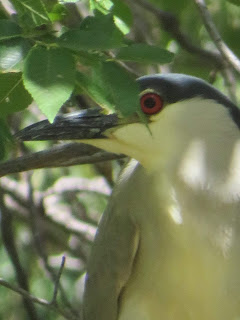Corrales NM is a whole package. There are people who prefer landscapes, those who like insects. A few people like amphibians, and most people like birds. Some people like video, others prefer pictures. People like to read science, others prefer romance. There is room for everyone here. Indeed, this is essential for the world to work. We do not always remember this idea, and often focus just on that small part of the world that concerns us. This is a mistake.
Personally, I see the world better through a microscope. Others in my family are much better at taking a wider view. Sunsets in the southwest have insane sunset colors of orange, pink, blues, gold, and greys. These are very common, and I often forget to look at it while I hurry through yet another dog walk in the evening.
For now the beetles are larger than the new toads, but this will change. The moisture triggers many burrowing beetles to begin mating. Many small, soft bodied insects that need hot and dry conditions are going to be replaced by the progeny of giant beetles; ten lined June beetles, darkling beetles (like this pair) and others, such as the metallic green June beetle. There is quite some confusion about the name "June bug" which seems to cover about 300 different species
These two fledged owls have a long way to go until they can hunt on their own. During the summer, they will eat a lot of those big beetles, which are easy to hunt. By winter, however, only the small mammals will be left to hunt, and those are considerably harder to catch. Their mom is nearby, encouraging them with quiet screeches to hustle more, much like a soccer mom at Saturday practice.
This lesser goldfinch is offering a lesson in why weeds are not just messy. It is clearly eating the seeds of kochia and russian thistle. Those seeds grew last year and have been left behind as the plant died off. The current year's crop will not be ready until the fall so this seed bank is an important resource for many birds. A clean garden often cannot support migratory and native seed eating birds. In this sense, the idea of replacing those seeds with a bird feeder seems so redundant.
It can be sobering to think that we see a minute fraction of those creatures that we share a woodland walk with. This is a shy night heron. They winter in this area, this one did not get that memo. The even shyer green heron has only been seen in a few locations in Corrales, where the tree canopy is thickest over a ditch.
Many plants and animals are symbiotic. The blooms of the silverleaf nightshade are uniquely adapted in both shape and color for the large bumblebees. While bumblebees are in decline, the silverleaf is thriving on the strange gardening practices that the average urbanite practices in Corrales (clear cut everything to plant a lawn, then abandon it until sold to the next tenant)
There is so much we do not know about when it comes to biology. This is a flaxflowered ipomopsis it is a new plant to me and I know little about it. Like, why the Zuni used a poultice of this plant to remove the hair of youngsters. I have no idea why this is the only thing listed about his plant on Wikipedia. Other sources list the dried poultice as being a hair tonic, so I think someone got their wires crossed. The long tube hints that the pollinator is a night moth (hummingbird moth) which have 4 inch long proboscis to reach down into the flower. The mechanics of how the moth does this (in the link) still blows my mind. But the study of this, and many other phenomena helps humans to escape, temporarily, the "umwelt" that is the limits of human imagination and links us to the world that surrounds us.












The artful beautiful photographs took me on a peaceful journey. Thank you for sharing the stories as well. Loved it!
ReplyDeleteThank you! The pictures are nice, but the context adds a little bit more.
DeleteI don't believe in raking up leaves. I don’t mind explaining. Life exists everywhere! Beautiful photos and writing!
ReplyDeleteweeds, leaves in the dry season. Puddles and mud in the wet season. Such strong opinions on both sides. Thank you for your kind words.
ReplyDelete